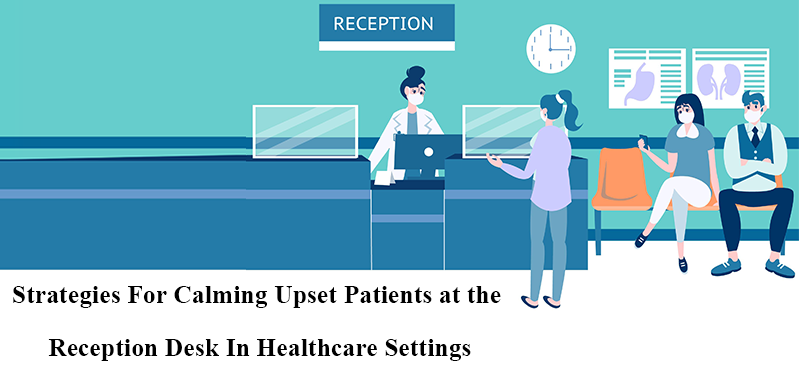
Provider Credentialing What You Need to Know
The healthcare profession is one of the trusted occupations after the pandemic or before that, and it's because of the trusted systems in the healthcare industry. However, ensuring the competence and reliability of healthcare providers is paramount. This is where provider credentialing, often called "provider credentialing 101," comes into play.
Whether you're a healthcare professional, administrator, or curious patient, understanding the fundamentals of provider credentialing is crucial. Here, we've covered everything in the handy guide to provider credentialing, exploring what it entails, the critical steps involved, and why it's vital for the healthcare industry.
What is Provider Credentialing?
Provider credentialing, or practitioner credentialing, is the rigorous process by which healthcare organizations evaluate and verify healthcare professionals' qualifications, skills, and background, including physicians, nurses, and other allied health personnel.
This comprehensive assessment ensures that providers meet specific standards, including education, training, licensure, and experience, before delivering patient care within a healthcare network. Initially, this process was complicated and time-consuming, and over time, many changes have made the process easy and hassle-free.
The primary goal of credentialing is to guarantee that patients receive high-quality care from competent providers, thereby enhancing patient safety and quality of care. Credentialing also plays a crucial role in meeting regulatory requirements and fostering trust between patients, healthcare providers, and organizations. It's why provider credentialing 101 or practitioner credentialing is still in its infancy.
What are the Critical Steps of Credentialing a Provider
Provider credentialing involves meticulous steps to ensure that healthcare professionals are qualified and competent. However, you can use these critical steps guidance by attending credentialing webinars, joining industry experts, and keeping track of the official websites. Here are the essential steps in the credentialing process:
Application Submission
Providers seeking credentialing must submit a comprehensive application detailing their professional history, education, training, licensure, certifications, and work experience. This initial step initiates the credentialing process.
Primary Source Verification
Healthcare organizations validate the applicant's information by contacting primary sources such as medical schools, licensing boards, and previous employers. This step confirms the accuracy of the applicant's credentials.
Review and Evaluation
Credentialing committees or teams review applicants' credentials and assess whether they meet the organization's standards and criteria. This involves evaluating educational qualifications, certifications, and malpractice or disciplinary action history.
Peer Review
Many healthcare organizations include a peer review process where current members of the medical staff review and assess the applicant's clinical competence. Peer feedback is invaluable in determining a provider's ability to deliver quality care.
Decision and Approval
After a thorough evaluation, the credentialing committee decides the applicant's credentialing status. If approved, the provider is granted privileges to practice within the organization.
Ongoing Monitoring
Credentialing is not a one-time event. Healthcare organizations continuously monitor providers to ensure they maintain their qualifications, licensure, and competence. This includes periodic credentialing and ongoing performance assessments.
Data Management
Credentialing involves significant data, typically managed through electronic credentialing software systems. These systems streamline the process and enhance accuracy and efficiency.
Who Sets the Standards for Provider Credentialing
To guarantee that healthcare providers within their jurisdiction adhere to specific training, safety, and quality criteria, regulatory bodies and collaborating agencies collaborate to establish standards and prerequisites that function as quality certifications for credentialed providers. Numerous entities are responsible for formulating these standards, which include, but are not limited to:
The Centers for Medicare and Medicaid Services (CMS): CMS sets the bar for credentialing healthcare providers participating in federal healthcare programs. They aim twofold: ensuring that individuals relying on these services receive high-quality care and efficiently utilize taxpayer funds.
State Licensing Boards: These boards define the criteria for granting licenses to healthcare providers within their respective states. They aim to guarantee practitioners meet educational, training, and ethical standards.
Professional Organizations: Specific healthcare professions have governing bodies establishing credentialing standards. For example, the American Medical Association (AMA) sets standards for physicians, and the American Nurses Credentialing Center (ANCC) establishes criteria for nurse credentialing.
The National Committee for Quality Assurance (NCQA): As a non-profit organization dedicated to enhancing healthcare quality in the United States, the NCQA accredits healthcare facilities like hospitals and clinics. Furthermore, it defines credentialing standards for healthcare providers working within these facilities. The NCQA's standards often serve as a benchmark for other organizations' credentialing criteria. In addition to these roles, the NCQA certifies credentialing verification organizations, ensuring compliance with rigorous standards and reliability in conducting accurate and efficient credentialing processes.
The Joint Commission: As the oldest and largest independent, non-profit standards-setting and accrediting body in healthcare, the Joint Commission evaluates healthcare organizations and establishes criteria that must be met to ensure the delivery of high-quality care. By setting these standards, the Joint Commission is pivotal in promoting patient safety, maintaining quality care, and upholding professional accountability throughout the healthcare industry."
Bottom Line
Provider credentialing is a critical aspect of healthcare that safeguards patient well-being and ensures the delivery of quality care. By following a systematic approach that includes application submission, primary source verification, review and evaluation, peer review, decision and approval, ongoing monitoring, and data management, healthcare organizations can maintain a competent and reliable workforce. Along with this, joining credentialing webinars can also boost the knowledge of professionals to abide by the credentialing process.
In an era where healthcare quality and safety are paramount, understanding the intricacies of provider credentialing is essential for healthcare professionals and patients alike. By upholding rigorous standards and regularly reassessing their providers, healthcare organizations can build trust with their patients and maintain a high standard of care delivery. Ultimately, provider credentialing is a cornerstone of patient safety and quality in the healthcare industry.




